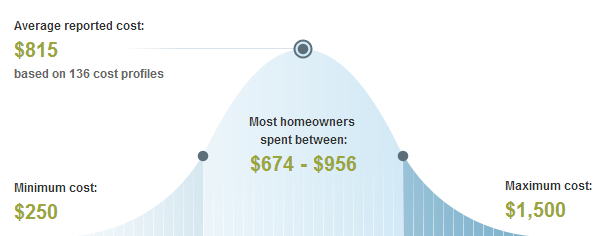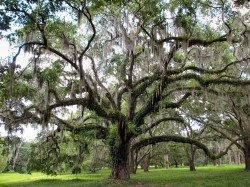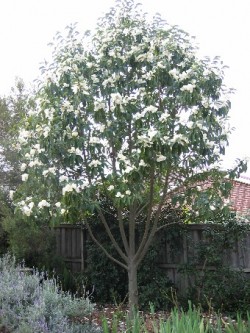Skip to a section:
- Costs – Richmond, Virginia is home to many different types of trees that need regular care and maintenance. See what tree owners pay for such services.
- FAQs – What kinds of trees do you want to grow in Richmond? What pests are currently causing issues? What are the regulations for growing trees according to the city? Learn more.
- Services – We have a list of local pros for the city. Find one today!
How Much Do Tree Services Cost in Richmond?
Keeping your yard well maintained throughout the year can provide you and your family with a pleasant place to sit, play or simply enjoy the beauty of the outdoors. If you are inexperienced in tree care or are too busy to maintain the trees on your property, hiring a professional tree service provider in the Richmond area can go a long way toward a healthy and green landscape.

How Much Does Tree Removal Cost?
If you need to remove a diseased or dangerous tree from your property, you can expect to spend anywhere from $675 up to $960 for tree or shrub removal in Richmond. The minimum cost for these types of services can be as low as $250, and the maximum cost is generally no more than $1,500.
How Much Does Stump Removal Cost?
The average cost for stump removal or grinding is $565 or $5 per square inch, though prices will vary depending on the girth of the stump and if it has any pests or problems preventing it from being smoothly removed. Professionals might also charge extra depending on if they haul it away as one piece or grinding it into smaller pieces and have to clean those parts up afterwards. Be sure to work out those details ahead of time to avoid any hidden costs.
Average Cost of Tree Maintenance in Richland
Keeping the trees and shrubs in your lawn trimmed will help them to grow and stay healthy longer. If any trees are diseased, removing them or keeping them trimmed can help to prevent spreading the disease to other trees or plants in your yard. Trees that have managed to grow up and over power lines are especially unsafe and can cost extra to trim because the branches must be roped and lowered toward the ground. The average reported cost that most homeowners spend for general tree services, such as pruning, is around $815.
Richmond Tree Facts & FAQs
With warm summers and mild winters, Richmond’s climate is well suited to a variety of trees that give the area a beautiful landscape. Home and property owners in Virginia all have a responsibility to care for the health of the local trees, and a little research can help in understanding city regulations and proper tree maintenance in Richmond.
City Regulations
In the city of Richmond, permits for the maintenance or removal of a dead or damaged tree are issued by the Urban Forestry Division. In certain cases, these permits can be issued free of charge. If a home owner is in need of a tree inspection, they may request one by getting in touch with the Richmond customer care center by dialing 3-1-1.
You can obtain a tree removal application by printing one out on the city website. This application requires your name, contact information and the reason you feel it is necessary for a particular tree to be removed. There is also a place on the form to fill out the company information for your removal contractor.
The best time to remove a tree in the Richmond area is when the tree has become dormant. This occurs during the winter months from December to February. Because winters in Virginia are typically mild, it is also the ideal season to trim branches and uproot trees without the fear of high winds or heavy snowstorms causing complications.
According to the Urban Forestry Division of Richmond, which maintains over 100,000 city-owned trees of 80 different species, large trees should grow to heights of no more than 45 feet high. Small trees and ornamental trees should retain a height of 20 or 30 feet tall. No person or property owner is allowed to remove a tree for construction or for any other reason without filling out an application and obtaining a permit from the Director of Recreation and Parks. In most cases, removal should be looked at as a last resort. Well-maintained trees can add more value to your property while also supporting ecology.
Common Trees
 There are many beautiful trees that thrive in Richmond’s climate. The state tree for Virginia, the American dogwood, grows well throughout the state with minimal maintenance required and provides a beautiful floral start to spring. Other common trees that grow well in the Richmond area include:
There are many beautiful trees that thrive in Richmond’s climate. The state tree for Virginia, the American dogwood, grows well throughout the state with minimal maintenance required and provides a beautiful floral start to spring. Other common trees that grow well in the Richmond area include:
- Live oak (Quercus virginiana)
- Bald cypress (Taxodium distichum)
- Chinese elm (Ulmus parvifolia)
- Chinese privet (Ligustrum sinense)
- London plane (Platanus xacerifolia)
Fruit trees often do well in Virginia’s humid, semi-tropical climate. Some of the best types of fruit trees to grow in the area include fig, mango, peach, plum and paw paw.
Difficult Trees to Maintain and Pests
 Depending on where you live, there are several trees that can be difficult to grow and maintain. If you live in the vicinity of the oceanfront, certain types of trees will have issues due to the salt water content in the air. The honey locust trees and the southern magnolia are both very beautiful, but they cannot tolerate the local environment and the conditions caused by the ocean’s wind currents. Other trees that should not be considered for properties near the ocean include bradford pear and sweetgum trees.
Depending on where you live, there are several trees that can be difficult to grow and maintain. If you live in the vicinity of the oceanfront, certain types of trees will have issues due to the salt water content in the air. The honey locust trees and the southern magnolia are both very beautiful, but they cannot tolerate the local environment and the conditions caused by the ocean’s wind currents. Other trees that should not be considered for properties near the ocean include bradford pear and sweetgum trees.
Some of the most common diseases and pests that affect trees in the Richmond area include spider mites, phomopsis blight, phytophthora root rot, bark beetles, bagworms and white pine weevil.
Richmond Tree Facts
The tallest trees in the state of Virginia are the tuliptree, followed by the bald cypress and American sycamore. The shortest trees in the area include flowering trees such as the American dogwood, the golden rain tree and the eastern redbud. Virginia is the only state to have the same state tree and state flower. The American dogwood, the state tree, gives off beautiful blooms each spring, which are known as the state flower. The best types of trees to plant in Virginia are understory trees such as dogwood or holly varieties.
Residents of Richmond may participate in the Adopt-a-Tree program. Contributions are tax-deductible, and the participants must water and maintain the trees that they plant within the city for at least the first two years. Richmond’s Urban Forestry Division is responsible for planting approximately 2,000 new or replacement trees every planting season.
Plant Hardiness Zones in Virginia
Here are the plant hardiness zones for Virginia as provided by the USDA:

Local Tree Services in Richmond
